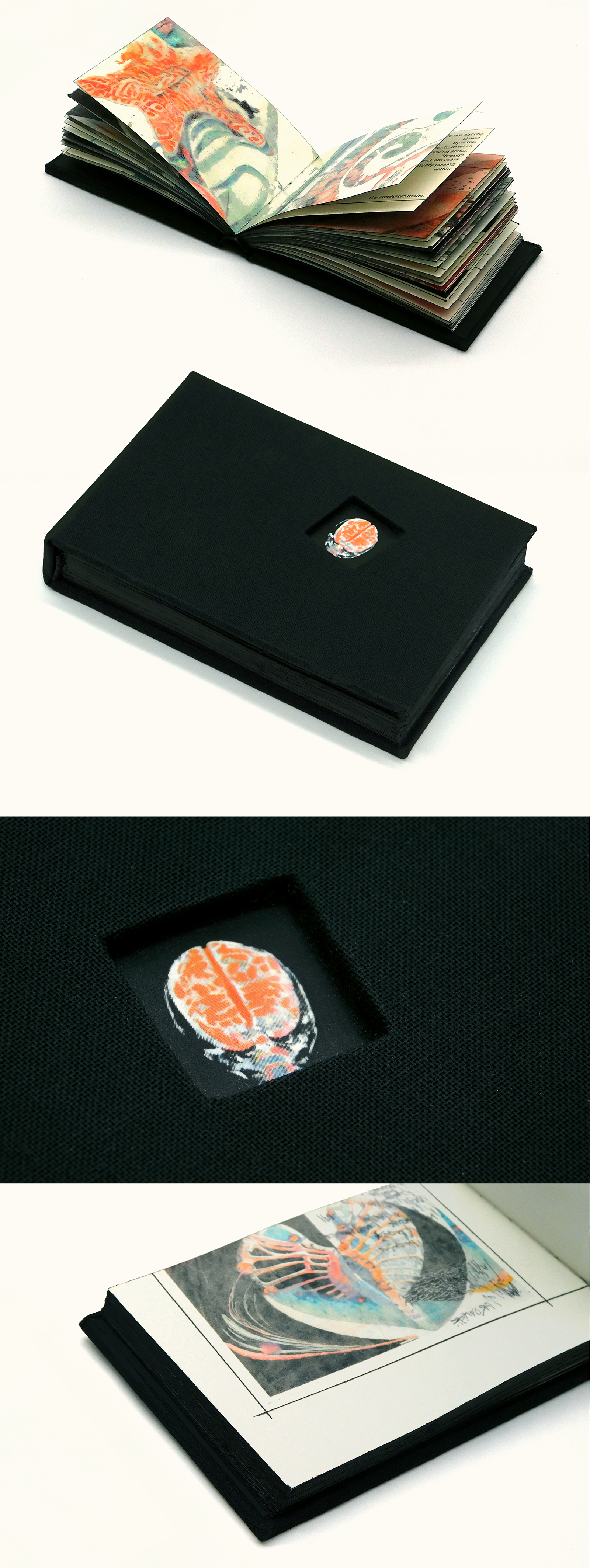Prayers for the Rain
A collaboration between man and machine, this project began as a college assignment that required the use of AI-generated imagery which was something I was initially resistant to. Instead of relying solely on an automated process for text-to-image generation, I chose to take the little control I had by providing the AI with my own original artwork as source material. The results were reinterpreted, distorted, and reimagined through re-editing, printing, and collaging, using mixed media. I then scanned and formatted this new imagery into a book using InDesign. After that, I printed and bound the book by hand.
The final product explores the intersection between human thought and artificial mimicry, focusing on the mind’s emotional patterns, cycles, and occasional fragmented logic. What started as a forced experiment transformed into an introspective study on authorship, repetition, and the blurred lines between organic and synthetic creation.
One key insight that resonated with me was something said by Bradley Walsh: "Times change, and if you don't change with them, you get left behind." This statement became a form of permission for me, not to surrender to technology but to engage with it on my own terms.

